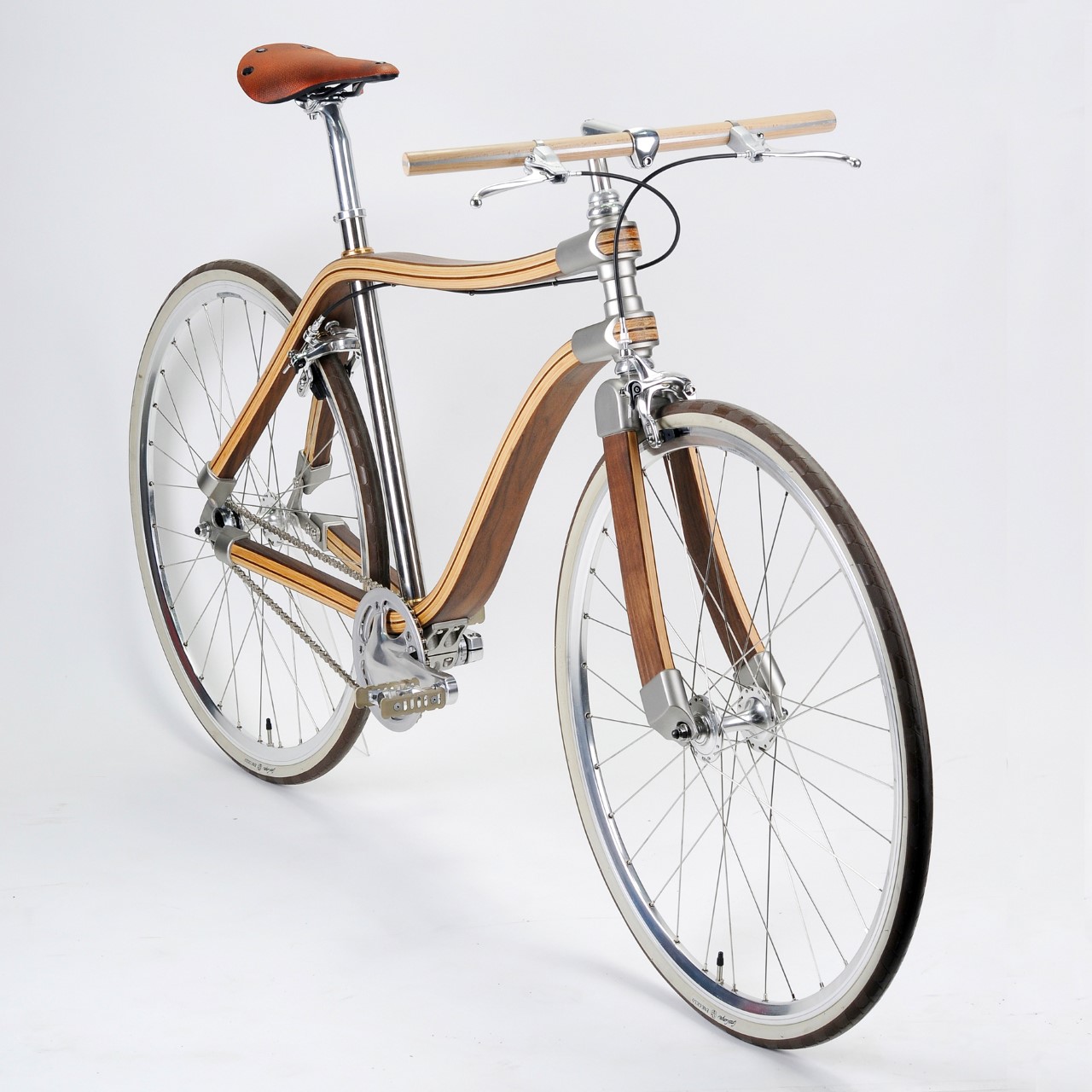Using wood for bicycles, such as the Moccle designed by Masateru Yasuda, is an exciting concept. Wood has been used for centuries in various structures, including buildings and furniture, due to its strength, flexibility, and vibration-absorption properties.
Yasuda drew inspiration from traditional Japanese buildings that utilize wood’s characteristics to withstand earthquakes, and he applied this idea to the design of the Moccle.
Read More: All about the BMW R18 Octane
Moccle
The Moccle bicycle employs a bent plywood frame, acting as a shock absorber by flexing to pressure and undulating surfaces. This flexibility helps to absorb the stress generated by riding on rough terrain or encountering obstacles. The frame can maintain its structural integrity while allowing controlled flexing by using metal fixtures to hold the plywood in place.
The absence of gears, a dashboard, shock absorbers, and even a bell on the Moccle indicates a focus on simplicity and a minimalist aesthetic. This design approach emphasizes pure riding enjoyment, with the bent-wood frame providing a unique visual and tactile experience.

Materials
While traditional materials like metal and carbon fibre are commonly used in bicycle construction due to their well-established properties and manufacturing processes, exploring alternative materials such as wood offers the opportunity to create innovative and sustainable designs.
The Moccle showcases how wood’s properties can be leveraged to create a bicycle that combines functionality, aesthetics, and a connection to traditional craftsmanship.
Yasuda’s approach to creating a bicycle frame using a combination of wood and carbon fibre is interesting. By sandwiching thin sheets of carbon fibre between sheets of wood, he aimed to create a frame resistant to ageing, shrinkage, and cracking. This combination provides the bicycle with both strength and flexibility.

Natural
Wood is a natural, carbon-based material that shares some similarities with carbon fibre, a synthetic material made of carbon atoms. Both wood and carbon fibre offer strength and lightweight properties, although they have different structural characteristics. Wood is a natural composite material of cellulose fibres embedded in a lignin matrix. On the other hand, carbon fibre is composed of tightly packed carbon atoms arranged in a crystalline structure.
Yasuda’s plywood construction technique, incorporating carbon fibre and wood, aimed to leverage the advantages of both materials. The carbon fibre adds strength and rigidity to the wooden frame, making it more durable and resistant to various environmental factors. On the other hand, the wood provides a certain level of flexibility, contributing to a comfortable ride.
Read More : This classic MVAgusta is for sale
Shape
The steam bending process used by Yasuda to shape the wooden frame is a well-known method employed to bend wood into desired profiles. Applying steam to the wood makes it more pliable, allowing it to be bent without breaking. This technique is commonly used in woodworking to create curved or intricate shapes.
Overall, Yasuda’s design approach combines the natural qualities of wood with the strength and resilience of carbon fibre to create a bicycle frame that is both sturdy and flexible. By utilizing the properties of these materials, the aim is to develop a long-lasting and reliable bicycle.
Source: Vietnam




































